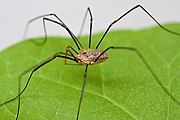A short description of the Limbourg brother can be found here. I was very attracted to this site because it has little fun puzzles and worksheets corresponding to various artists. My boys enjoyed solving and filling up these during their free time. I will be filing these sheets up in their art file together with their brief outline about the artists and whatever related drawings or paintings they did during our study of the Limbourg Brothers.
One of the projects in our Artistic Pursuit book was to make animal figurines of possible animals that the Limbourg brothers would see in their patron's (Duke de Berry) castle. We thumbed through the books we have that had clear photographs of animals. We each chose an animal to replicate. B wanted to look at our Neon Tetras in our aquarium instead. D chose a seal and I, an owl.
We started a new pack of clay. This time I bought a small pack of clay (500g) so that we can finish the whole pack in one sitting (solves the problem of having to keep the unused clay properly so that it won't harden). We managed to make another owl, a grizzly bear, a frog and that last little bit of clay was conveniently transformed into a snake. Every bit of the clay was used up. I liked it this way and would probably do the same next time.
It took us 2 sessions to complete our figurines. One session of two hours to mould and another session of slightly less to paint them.
After completing the animals, we sat down to constructively evaluate our work.
D didn't like his seal. We all agreed that the shape was not right. I however praised him for his effort in mixing just the right colour for the seal (He used up SO much of our paint in the process!! Ok... never mind about that ;-)). He was proud of his bear :-)
(I have taken pictures of our clay models together with the photographs we copied from.)

B wanted to make another owl after seeing me complete mine. But he wanted his owl to turn its head to face the back. He have read that owls can turn their heads almost 180 degrees to the back. After realizing that this might look funny, he decided it will turn its head to the side instead.

I joined in the fun too! Here are my sea turtle and frog.


We all enjoyed ourselves so much!!! We unanimously agreed that we need to have more regular clay model-making sessions. I am not sure how realistic this plan is though :-b
Visit Rumphius Webpage Art to learn more about how we approach Art in our homeschool.
































